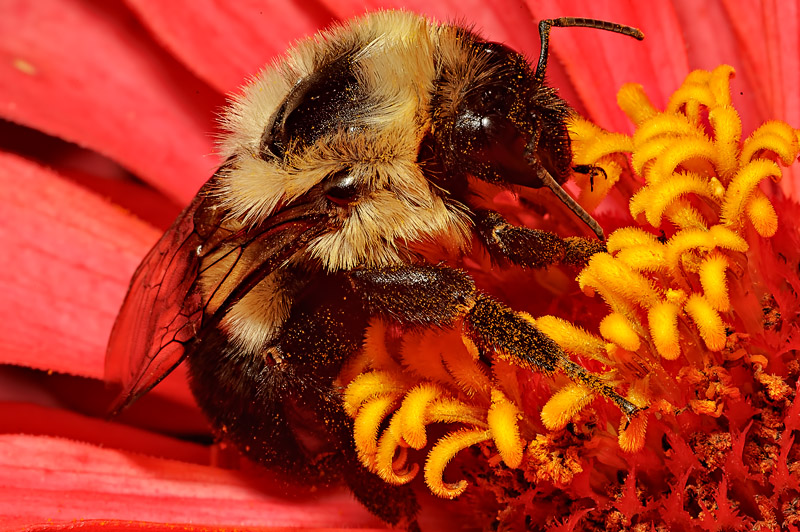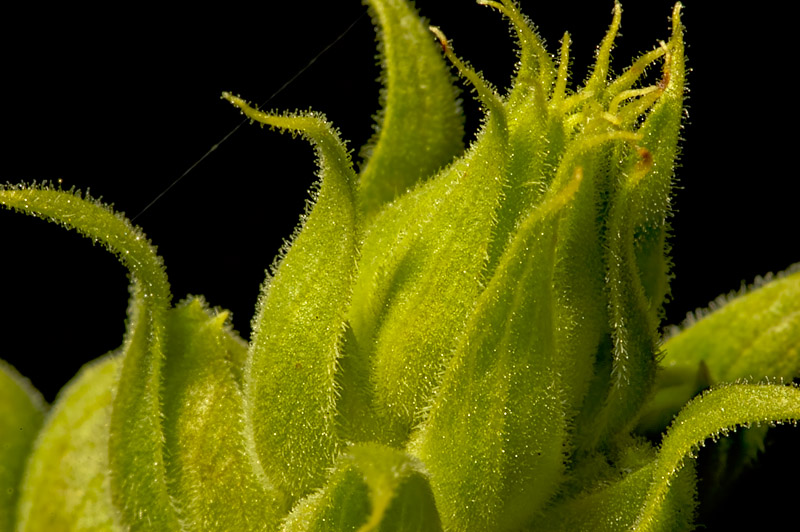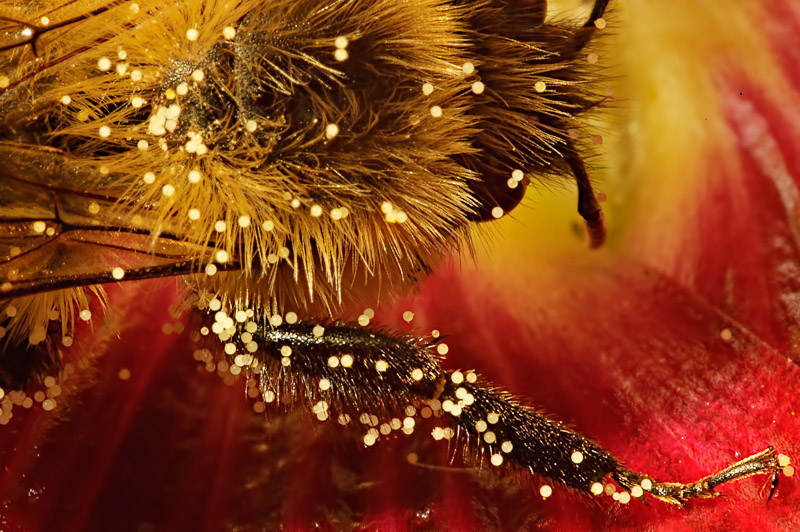I bought the D70s way back in 2006, early in the year. I loved it from the first moment I shot it until I sold it to one of my son’s friends, who at the time needed a dSLR for his journalism class. He still shoots the D70s and Sigma 18-200 and is happy with it as far as I know.
I was wandering through my archives, looking for images of my old kitchen (as my new one nears completion) and I stumble don a walk in the woods that took place more than five years ago. This was at the height of my macro phase and I shot some extreme close ups of everything imaginable … flies, beetles, bees, buds … etc.
I even found three images that I had not noticed back. I like these quite a lot so I decided to process them now. It gave me a chance to see how far the newer cameras have come, and I must say that I was quite surprised.
The D70s has always been considered an extremely sharp camera because of a weak anti-aliasing filter. But what I had never noticed before was that pulling up the exposures creates a spectacular amount of nasty artifacts in the images that, were it not taken care of, would most certainly make the images look harsh in that “digital” sort of way. Gritty is another term I often use …
But it turns out that it really possible to fix this problem … Topaz Denoise 5 is the weapon of choice. Just be careful to dial it back just to the point where the edges are properly reconstructed and the flat surfaces are smoothed, but before the fine details are smeared completely. I’m pretty pleased with the results.
Here is a shot of a bee on a flower, and this one does retain some of that edge I was talking about. But it is immensely detailed and sharp and so is worth seeing in my opinion.
Next, we have a lovely flower bud with a very subtle strand of spider web on it. I had to do some layer masking to get the contrast and background right while preserving the strand, but that’s just the price of alleviating one’s dependence on a camera’s or converter’s limited abilities.
And finally … the image that originally caught my eye and frankly blew me away … this is about 1/4 of a bee full frame and showing pollen almost as clearly as if seen through a microscope. Wow …
I love this image and have no idea how I originally missed it (other than that it was more than a stop underexposed.)
Some lessons learned:
- Keep your originals! Don’t cull so hard that you throw away images that might be beyond your skills today. Assume that you will visit your archives now and again and find a few gems.
- Make backups! I’ve had three or four rebuilds and disk crashes since shooting these images. A thorough backup procedure ensured that these would still be here when I discovered them.
- Modern cameras really have improved the pixel level quality of imagery. By quite a lot to be honest. But these older bodies still take a great image …


